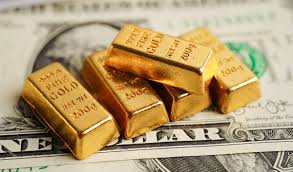Let’s be honest—it sounds like something out of a history book, right? The gold standard was once the bedrock of global finance, but after it was abandoned in the 20th century, most people assumed it was gone for good.
And yet, as the 21st century unfolds—with inflation worries, soaring debt, and growing skepticism about fiat money—the question keeps coming back:
Could we return to a gold standard?
Or at least… something like it?
It might sound unlikely, but the idea isn’t as far-fetched as it used to be.

Why Are People Even Talking About This Again?
Here’s the thing: every time fiat currencies lose public trust, gold re-enters the conversation.
Think about the 2008 financial crisis, the post-pandemic inflation spike, or even today’s growing interest in cryptocurrencies. They all come with a common thread: people start looking for money they can believe in. Something real.
Gold, with its thousands of years of monetary history, keeps rising as the ultimate fallback.
The Case For a Modern Gold Standard
Supporters of a gold-backed system today make a few solid points:
- 🛡 Stability: Gold limits money printing, reducing inflation risk
- 🌍 Trust: It offers a globally recognized store of value
- 📉 Discipline: Governments can’t just spend endlessly or manipulate currency for political gain
And with new technologies—like blockchain, tokenization, and digital asset custody—it’s actually easier than ever to build a gold-linked system with real-time transparency.
In theory, a digital gold standard could combine the best of both worlds: gold’s trust… and tech’s speed.
But Let’s Be Real—There Are Big Challenges
Of course, there’s a reason we left the gold standard in the first place.
- ⛏ Gold supply is limited, and can’t keep pace with modern global growth
- 🔁 It would restrict governments’ ability to respond to crises, like COVID or wars
- 💱 Global coordination would be a logistical nightmare—how do 190+ countries agree on exchange rates and gold allocations?
Plus, central banks today are leaning more into digital fiat—like CBDCs (Central Bank Digital Currencies)—not precious metals.
So… Could It Actually Happen?
A full return to the classical gold standard? Probably not. The world’s too interconnected, too fast-moving, and too reliant on flexible monetary policy.
But a partial shift? A hybrid model? A gold-backed stablecoin used for global trade?
Now we’re talking possibilities.
Countries like Russia and China have already hinted at using gold to back new trade settlement systems. And private gold-backed tokens like PAXG and Tether Gold are gaining traction in digital finance.
So while a full-blown 21st-century gold standard might remain a dream—or a warning—gold’s role in the global system may quietly grow once again, especially as technology makes it easier to reimagine how money works.
